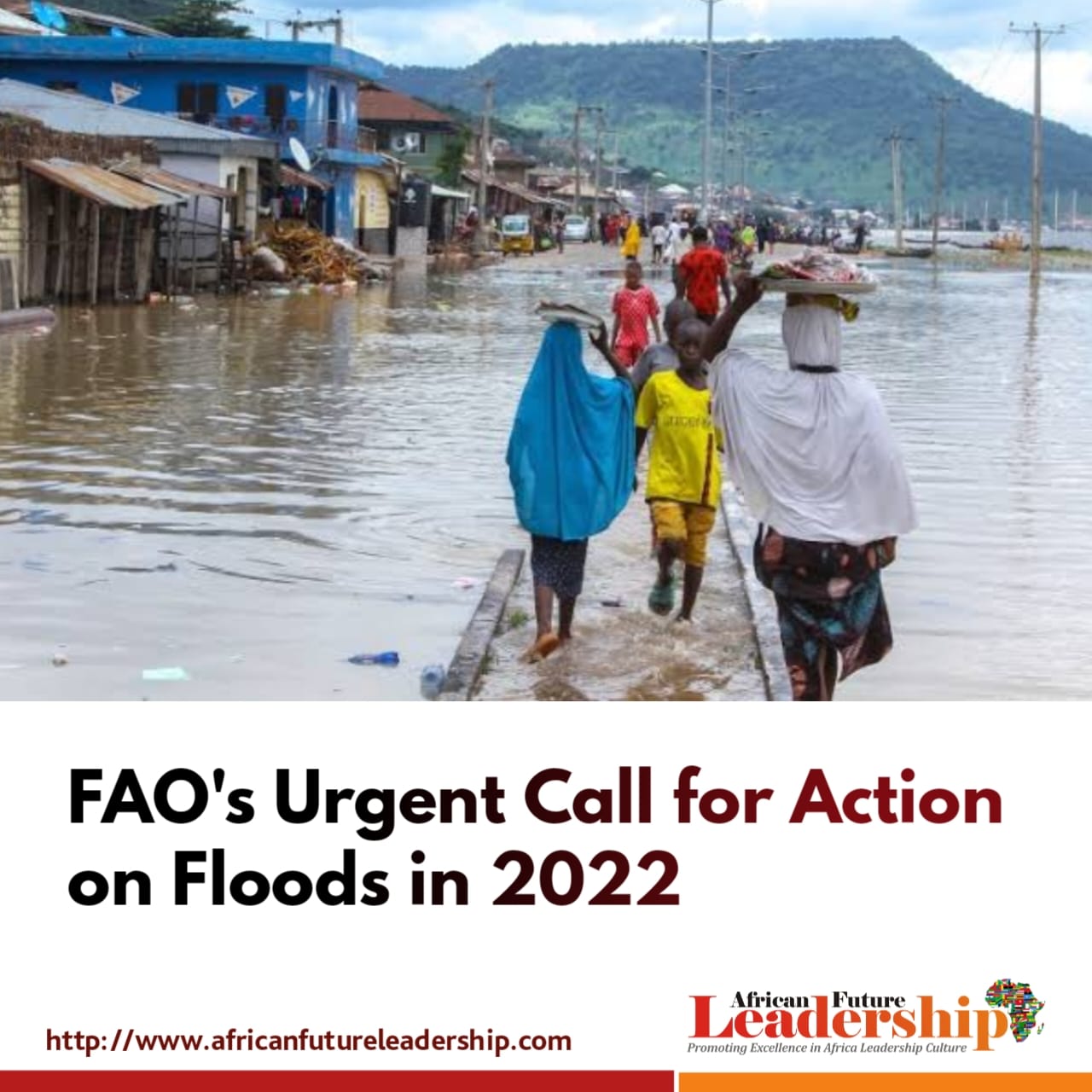By our Correspondent
The FAO reportedly, needs approximately USD 50 million for an urgent support to rehabilitate the agricultural livelihoods of communities affected by floods in West Africa and Sahel.
This has become necessary because during the 2022 rainy season, the Sahelian and West African countries have been impacted by the most severe floods in years, further affecting livelihood and food securityfood security in a region already facing a deepening protracted crisis and deteriorating needs.
READ MORE: World Bank: Low Income Countries’ Debt Doubled in Last Decade — Up by $9trn in 2021
Presently, an estimated 5.5 Million people have been affected by floods across West Africa in 2022, a year which had already been marked by the highest levels of food insecurity reached since the start of the Cadre Harmonisé (CH) food security analysis.
And instructively, this alarming deterioration in food and nutritional security is due to a multiplicity of factors and a series of crises affecting the region. First, there is the security crisis and its impact on the livelihoods of vulnerable households and secondly, other major causes such as climatic shocks (drought and floods), the socio-economic consequences of the covid-19 pandemic and soaring food prices. These multiple factors heavily affect the region, which is already facing structural issues of vulnerability such as poverty and low level of access to basic services, making the context increasingly volatile and prone to shocks and natural hazards, putting millions persons at risk. The recent floods provide a dramatic illustration of this.
READ MORE: Joy Ezeilo, Ibijoke Faborode Make ‘BBC 100 Women 2022’ List
Again, conflict has worsened in the border area of Liptako Gourma in the Central Sahel and the Lake Chad Basin, especially in in northwestern Nigeria, and continues to spread to new areas, most notably in Mali and Niger (encompassing the whole territory) and northern areas of the Gulf of Guinea countries, driving needs ever higher. This perpetual climate of insecurity affects livelihoods and access to food. Violent events and forced population displacements affect livelihoods and disrupt trade flows and the mobility of people, including pastoral transhumance, as well as access to basic services due to closure and dysfunctions of health structures, schools and markets. Insecurity also leads to a decline in humanitarian access in areas affected by conflict: reduction of humanitarian space and limitation of access to aid for populations.
Also, the food security crisis has since worsened. According to the CH (March 2022), during the June-August 2022 lean season, around 40 million people were affected by food and nutrition insecurity (Phase 3+). While these figures are being revised in November 2022 by CILSS and partners, there is a major risk that the strong impact of flooding on livelihoods and crops may lead to a sustained level of food insecurity in 2023, particularly in the countries hit the hardest.
Incidentally, the economic situation remains a concern across the region, with a general spike in staple food prices, and high inflation rates in some countries, including Nigeria, leading to an increase in extreme poverty. The regional and international context continues to affect the economic situation, including through the political and economic sanctions imposed on certain countries, as well as the impact of the Ukrainian crisis, which is leading to continuous increase in prices on international markets, particularly the prices and availability of agro-food products, fertilizers, fuel and humanitarian assistance. Reduced access to agricultural inputs and fertilizers has also affected the 2022 production. Food access levels are deteriorating in the region in line with exceptionally high price levels and incomes still affected by the economic slowdown, the residual effects of the COVID-19 pandemic and the Ukrainian crisis. Sadly, this challenge continues to assume worsening dimensions quite specifically, while extending to the entire region with Nigeria, Niger, and Mauritania particularly marked by these atypical increases.




